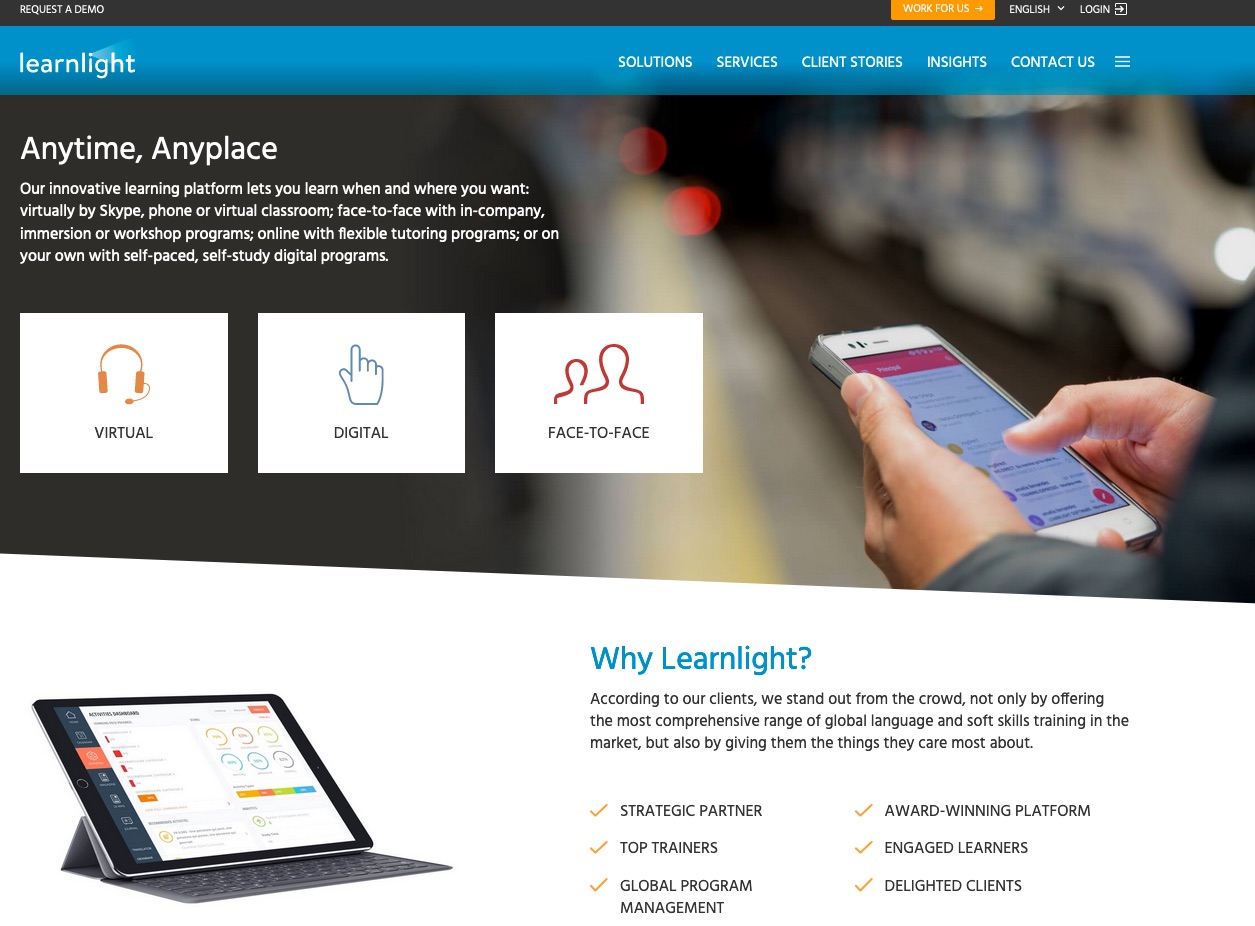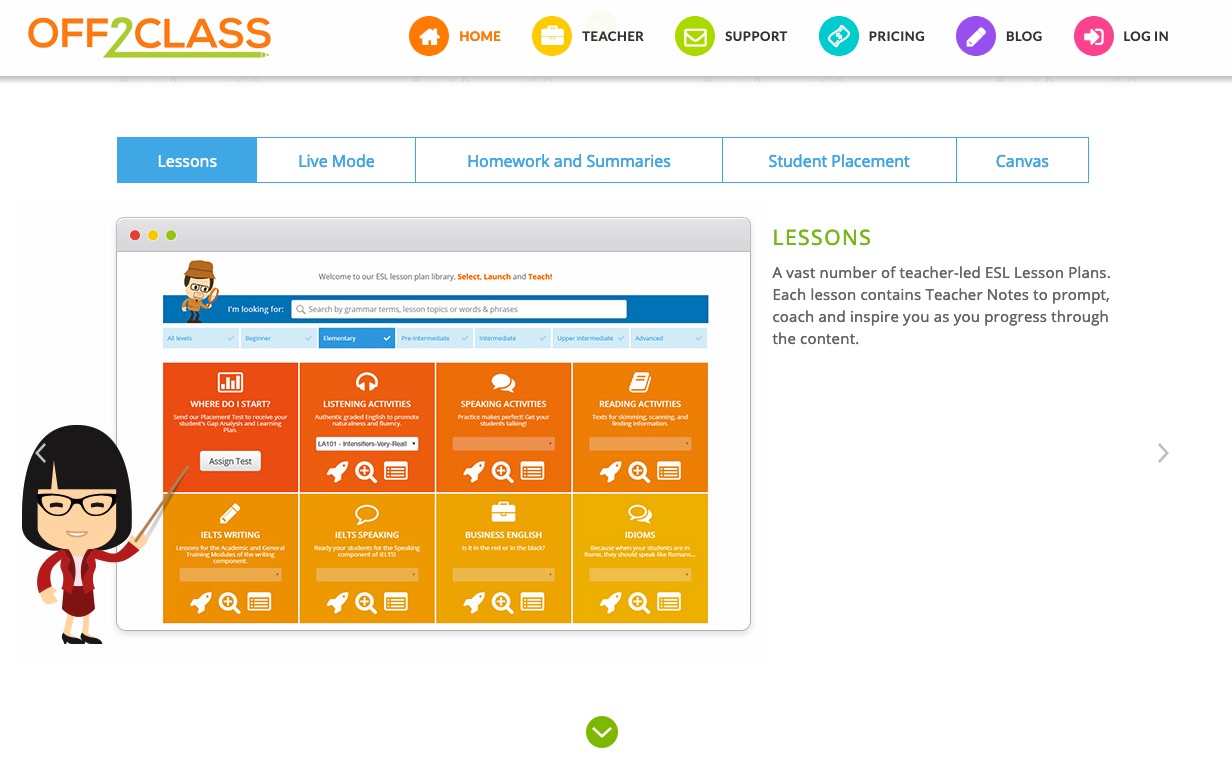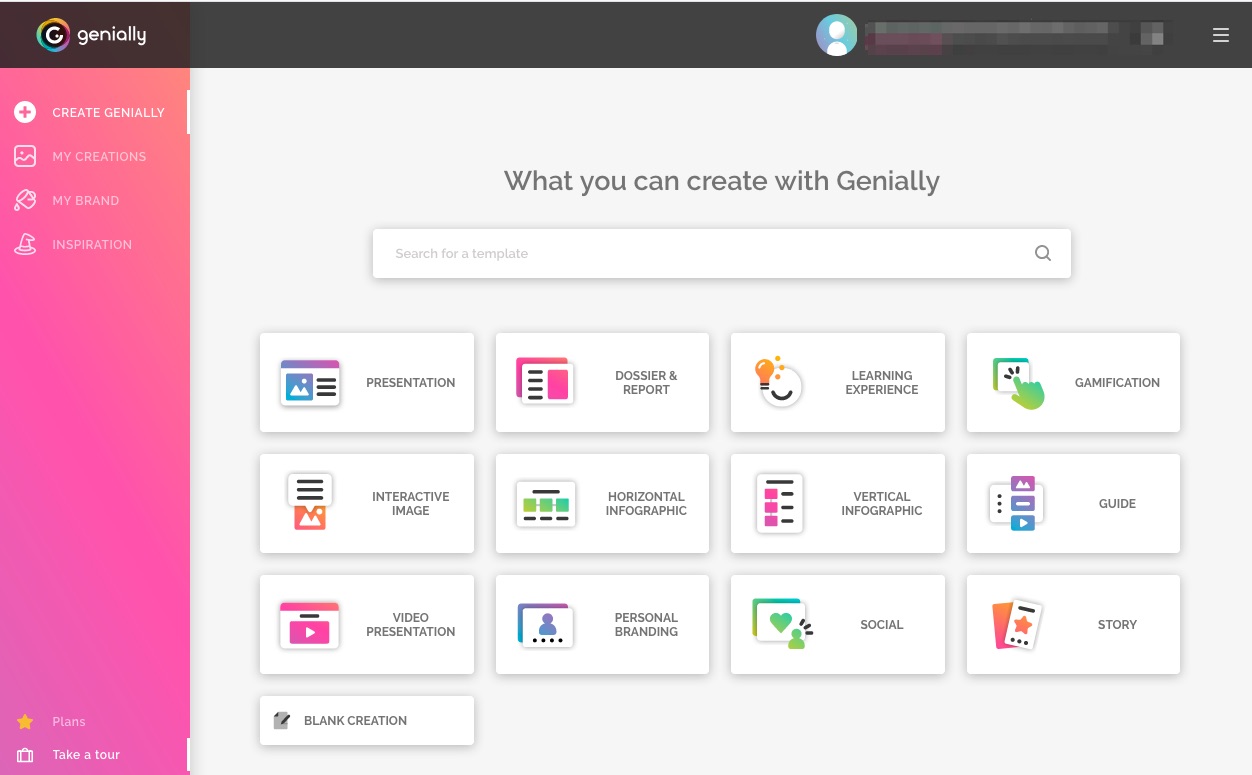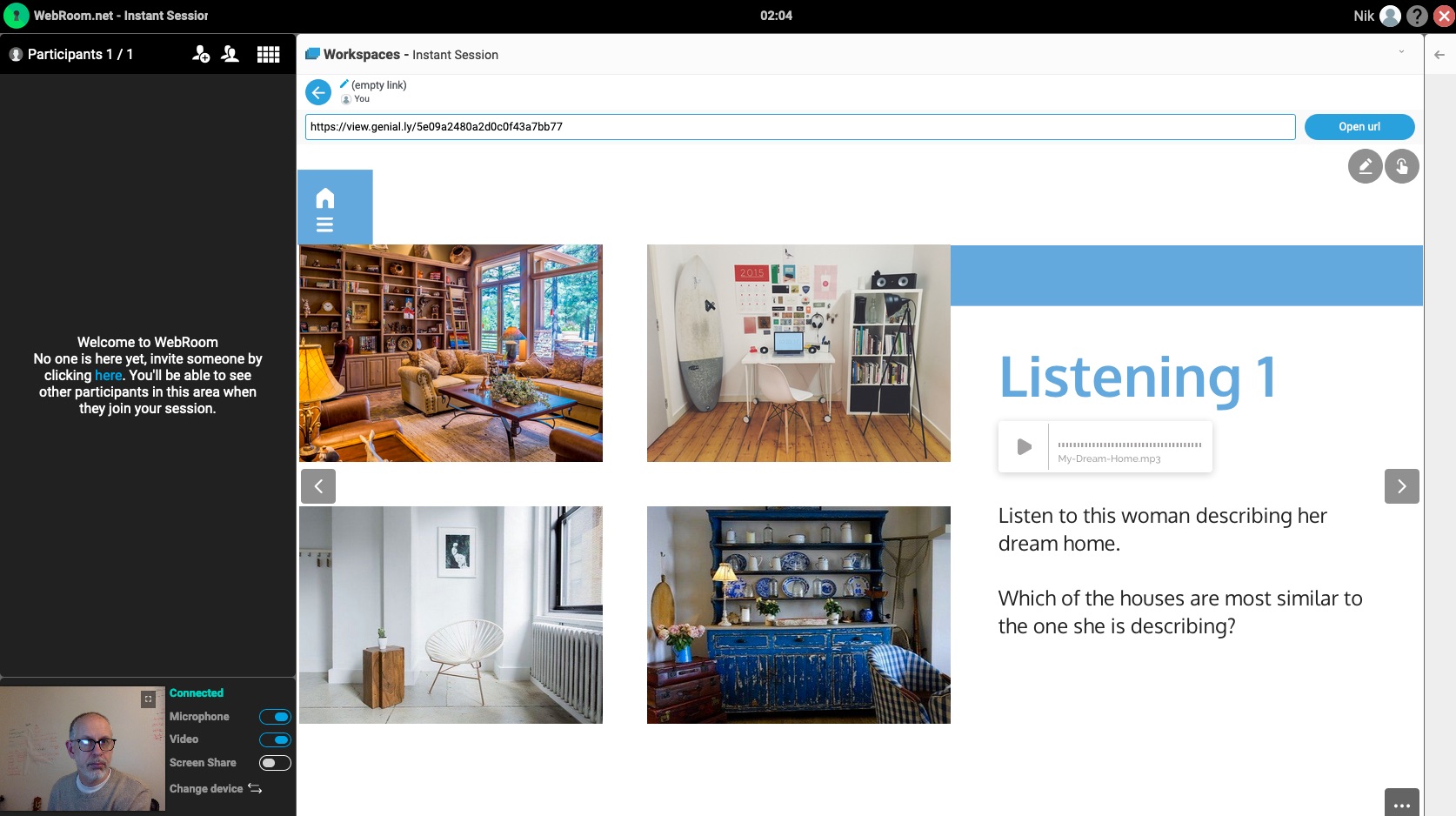The teaching environment and needs of our students have changed rapidly over the last couple of weeks due to the outbreak of the Coronavirus. For many, teaching English online is the only viable way to continue helping your students whilst staying safe. This rapid transition means that some teachers are not as well prepared as they could be.
You’ve already read about some of the techniques you need to develop and some of the hardware and software you need, but there’s one other vital part to the mix, and that’s content.
If you want to move students beyond the stage of just meeting up for a chat online—and most students will want to move beyond that—then you’ll need course content to base your lessons around.
This might seem like an easy problem to solve, but it can become quite complex, and if you want to deliver lessons that are slick and professional, you need to think about how you are going to do this.
Using classroom content
Most teachers who start teaching independently online use a normal coursebook. They either scan copies of pages as a PDF and send them to students or get students to buy a copy of the book. The main problem with this is that the first of these two options is illegal (a breach of copyright in most cases) and the second of these just doesn’t look very digitally savvy and professional.
The next problem you will find with coursebooks designed for the physical classroom is that when you come to do listening activities, you have a technical hurdle to overcome. How do you give students access to the audio file you want them to listen to? You can upload it to the platform you use if it enables this (again this is a breach of copyright) then students can download and listen, or you can try playing it on your own computer and putting your microphone close by, but again that doesn’t come across as particularly professional.
Using commercially produced online content
One solution is to buy content that has specifically been designed for delivery in an online teaching environment. At the higher end of the market, there are companies like LearnLight that provide ready-made courses that have accompanying online content that has been created by experts. This is great if you can afford it but these courses come at a price and if you are working alone or in a very small company and still developing your market, it’s unlikely that this is going to be an easily affordable solution.
 There are companies like Off2Class that cater to smaller online schools or individual teachers, and they offer a good range of content that’s very flexible in the way it can be delivered. The materials come with a range of homework options, too, and it’s easy to search and find individual lessons to suit your students. The cost is much more modest than the bigger companies like LearnLight, but it is still a cost and as a startup, you’ll probably want to reduce your costs as much as possible.
There are companies like Off2Class that cater to smaller online schools or individual teachers, and they offer a good range of content that’s very flexible in the way it can be delivered. The materials come with a range of homework options, too, and it’s easy to search and find individual lessons to suit your students. The cost is much more modest than the bigger companies like LearnLight, but it is still a cost and as a startup, you’ll probably want to reduce your costs as much as possible.

Creating your own content
The next, and probably the best long-term alternative is to start to produce your own materials. This enables you to tailor the materials to your individual students and their needs, add your own branding and logo and also to start building up your own bank of online teaching content, which, as you grow, can add to the value of your company.
There are a number of ways you can do this. One of the easiest is to create materials using presentation software such as PowerPoint. This puts your materials into a screen-sized format that suits the medium of delivery and enables you to deliver visually rich materials. The disadvantages of this format though are that PPT slides create quite large files, so whether you’re screen-sharing the materials or sending them as files to your students, that takes up time and bandwidth. It also doesn’t solve the problem of delivering audio for listening activities.
For me, the best solution to the problem is to develop materials using an online HTML5 development tool like genial.ly. HTML5 will work in the browser on almost any device, whether it’s a laptop, tablet or smartphone. It will also enable you to design dynamic and interactive materials that will look more professional and work more effectively with less bandwidth than screen-sharing a PPT.

The HTML5 option can also help you solve the problem of delivering audio for listening activities as audio files and even video files can be embedded in the materials. If you are using an online platform like iTeachWorld, you can also deliver the materials through the presentation feature, and listening materials can be activated by the student. Genial.ly also enables a range of other features like drag and drop and annotation that can work within the browser during the classes.

Which tool to use?
There are a number of other HTML5 based editors such as Visme and Venngage and most of these have a free subscription that you can use until you build up enough students to opt for a premium subscription which will enable a greater range of features. All of these editors are very easy to learn and simple to use and even with a premium subscription, they work out much cheaper than buying content in and the content you produce remains your property. Here’s an example that I created: The Athlete.
The other advantage of using tools like Genial.ly and Visme is that they can create a wide range of digital assets, so you can also use them to create marketing for social media and websites as well as self-access content and interactive games for your students. So all in all, whether you are just thinking of developing your own freelance business with a limited pool of students or whether you want to turn your online teaching into a startup online school, creating your own materials can be both financially and creatively rewarding.
30-hour Teaching English Online course – Save €100
The Oxford TEFL 30-hour One-to-One Teaching Online course with expert tutor support covers a range of topics, including:
- The pros and cons of teaching English online and how to ensure your learners get the most out of an online environment
- How to effectively use software and hardware for live online teaching
- The importance of tutor presence in online courses
- Activity planning, lesson planning and syllabus design for online courses
- Option to focus on either business English online or teaching young learners online, both growth areas in online language instruction
- How you can further your career as an online teacher, even starting your own business teaching online
We would like to give more teachers access to this course to enable them to continue to provide support to their students. We are offering a reduced fee of €250 (regular course fee €350) until April 30th 2020. Get in touch with us at [email protected] or apply here to join this course and learn everything you need to know about teaching English online.




 All of our courses are 100% paper-free
All of our courses are 100% paper-free